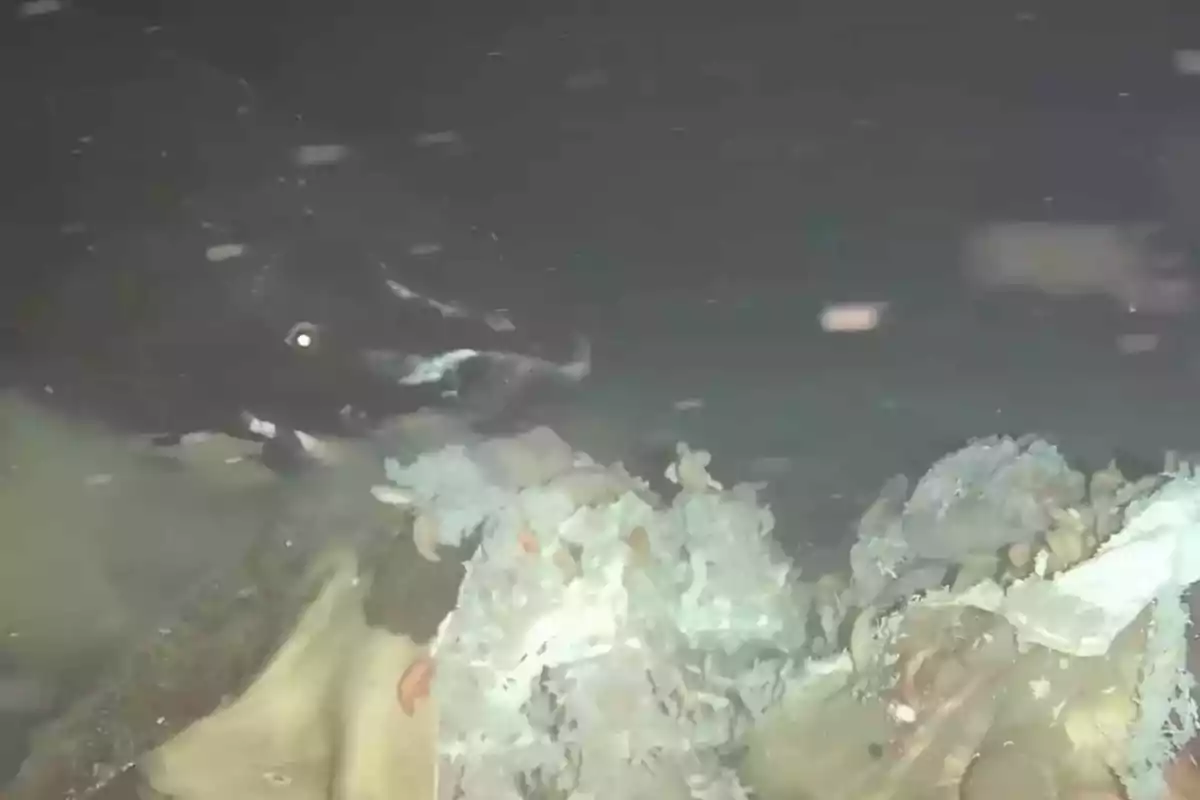
They throw a cow into the sea, and what scientists recorded is written in capital lett
The carcass of a cow off the coast of Hainan attracted eight Pacific sleeper sharks and revealed their feeding behavior and aggressiveness depending on size.
A cow carcass lowered 1,629 meters (5,344 feet) to the seafloor off Hainan Island drew eight Pacific sleeper sharks into view, giving scientists one of the clearest looks yet at how this rarely seen deep-sea predator feeds. The new paper analyzes behavior caught on video at the site building on the team’s 2024 first record of the species in the South China Sea.
Pacific sleeper sharks (Somniosus pacificus) are large, slow-moving sharks typically linked to the cold, deep waters of the North Pacific and Arctic. Seeing multiple individuals in the tropical South China Sea extends what we know about their range and offers a rare window into deep-sea food webs that are hard to study. Conservation reviews flag the species as poorly known and vulnerable to decline; the IUCN currently lists it as Near Threatened.
How the deep-sea bait-cam experiment captured Pacific sleeper sharks
Researchers set a remotely operated video rig beside a cow carcass on the continental slope southeast of Hainan and kept cameras rolling for 18 days. In that span, eight distinct sharks appeared and fed around the site, with estimated lengths from about 1.3 to 5.1 meters.
What the video revealed: feeding behavior, queuing, and size-linked aggression
Two patterns stood out. First, sharks appeared to take turns: individuals at the carcass yielded to newcomers arriving from behind, a queue-like behavior rarely documented for this species. Second, body size mattered. Sharks 2.7 meters (8.86 feet) and longer made more direct, aggressive strikes on the carcass, while smaller sharks circled deliberately before feeding; the 2.7-meter split was used only to separate “large” and “small” for analysis.
“Feeding priority is determined by individual competitive intensity, even in deep-water environments,” said Han Tian of Sun Yat-sen University and the Southern Marine Science and Engineering Guangdong Laboratory. The video also captured eye retraction during bites—likely protection because these sharks lack a third eyelid and particles exiting the spiracles, suggesting an auxiliary breathing role.
Pacific sleeper sharks in the South China Sea
All sharks identifiable to sex in the video appeared to be female, based on pelvic-fin anatomy, raising questions about whether parts of the South China Sea act as a seasonal gathering area.
Beyond Hainan, recent observations have pushed the species’ map southward and westward, including camera footage from the Solomon Islands and Palau. Together, the sightings suggest a broader Pacific footprint than once assumed for a shark best known from colder latitudes.
New research priorities for deep-sea sharks in the South China Sea
The most practical question is food. “The highly aggressive behavior of sharks observed in the South China Sea suggests that this region still harbors abundant food sources in the deep sea. But what exactly are they?” said Tian.
The team calls for more baited-camera work across depth ranges to test whether the sharks are occasional visitors or regular residents.
Limitations of the study and next steps for confirming range shifts
This is one baited-camera site with a small sample; it cannot, by itself, pin distribution shifts on any single driver. The earlier 2024 paper documented the first South China Sea record and similar queue-feeding; the new analysis adds finer-grained behavior and size patterns. Multiple teams will need to replicate results across seasons and sites.
The study is published in Ocean-Land-Atmosphere Research.
More posts: